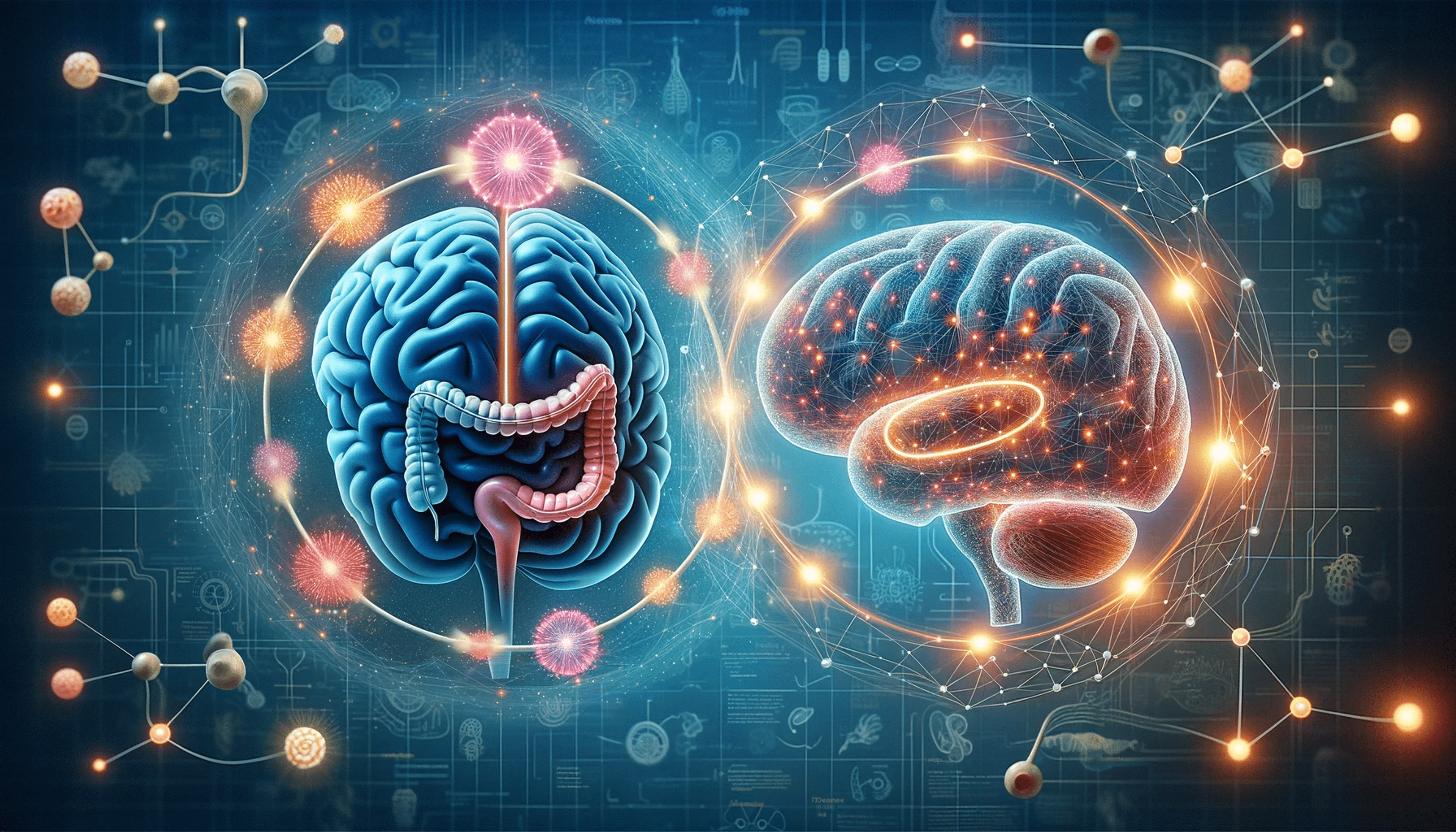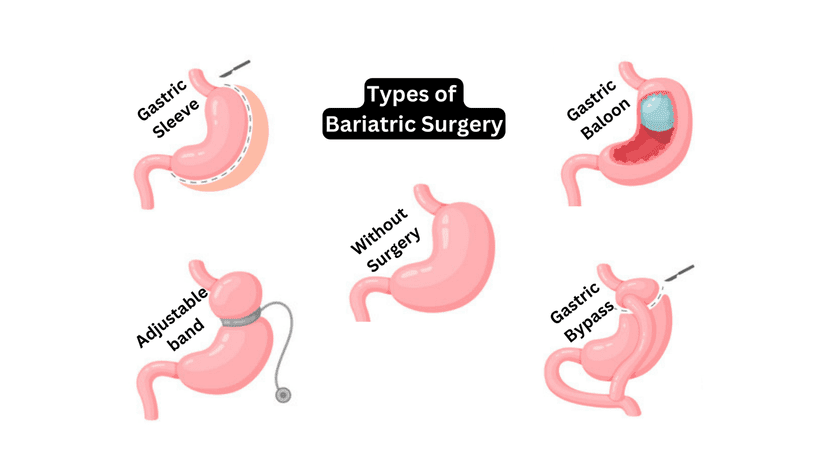The Science of Satiation: Understanding Your Gut-Brain Connection

Introduction to the Gut-Brain Axis
As one delves into the intricate lattice of human physiology, a striking network of communication between the gut and the brain reveals itself. This intimate interaction forms the basis of what we call the Gut-Brain Axis. Spanning the length from your cerebral nerve collection, all the way down to your digestive tract; the axis opens up a fascinating vista into how our body operates.
At the heart of this complex mechanism is a relatively simple but critical concept: Satiation. It is the feeling of fullness and satisfaction after eating. It's not short-lived, like the immediate resolution of hunger once you start eating but rather lingers, influencing when you'll eat next. How we perceive these sensations of hunger and fullness depends largely on the signals relayed between our gut and brain.
Understanding the underlying physiological dynamics can offer valuable insights into appetite regulation, overeating, and numerous health issues linked with these factors.
Defining the Gut-Brain Connection
The gut-brain connection refers to the bidirectional communication between the gut, or digestive system, and the brain. This isn't just a metaphor. They're actually connected through a vast network of nerves, most prominently, the Vagus Nerve, a major component of the autonomic nervous system.
The gut-brain axis plays an essential role in maintaining homeostasis by influencing not only gut functions but also how we perceive and react to internal and external environmental changes. For instance, the state of your gut can influence our emotions, while our emotional state can trigger changes in the gut.
The Role of Neurotransmitters and Hormones
This extensive dialogue between the gut and the brain is facilitated primarily by neurotransmitters and hormones. Neurotransmitters, such as serotonin and dopamine, send signals between your gut and your brain.
Interestingly, around 95% of serotonin, a neurotransmitter majorly involved with feelings of well-being and happiness, is produced in the gut. Thus, it's no surprise our gut health can have a direct influence on our mood and overall mental health.
The role of hormones in this communication is equally crucial. When you've eaten enough, your gut releases satiety hormones, like cholecystokinin, GLP-1 (Glucagon-like peptide-1), and PYY (Peptide YY). These hormones communicate with your brain, leading to the feeling of fullness.
How the Gut Influences Mood and Behavior
Expanding beyond just turning hunger signals on and off, the gut-brain axis also influences our mood and behavior. Disturbances in the gut-brain axis can lead to a range of problems, typically characterized by anxiety, depression, or impaired cognition. Consequently, maintaining gut health goes beyond physical well-being and ventures into the domain of mental wellness.
By recognizing the importance of the gut-brain axis and its connection with satiation, individuals can better understand their eating habits, which can lead to healthier behavior changes. Thus, the benefits of understanding the science of satiation reach far wider and broader than one might initially perceive. Thoughtfully considering how our gut-brain axis functions not only encourages respectful regard toward our body but also reveals the potential for self-improvement and wellness.
Hormones Involved in Hunger and Satiation
Understanding the intricate relationship between our bodies and our brains is an ongoing journey for science, and when it comes to hunger and fullness, or satiety, this connection becomes even more interesting. At the core of this association are specific hormones that play key roles in regulating these sensations. Some of the significant hormones involved include ghrelin, leptin, insulin, and peptide YY. These hormones function in intricate ways, communicating crucial signals to our brain and thus, contributing to our eating behaviors.
Ghrelin: The Hunger Hormone
Known as the 'hunger hormone', ghrelin is mainly produced in the stomach and small intestine. This hormone plays a significant role in stimulating appetite. When our stomach is empty, ghrelin is secreted. It then binds to receptors in a part of the brain known as the hypothalamus, leading to a sensation of hunger. After eating and filling the stomach, the secretion of ghrelin decreases, which helps reduce feelings of hunger. Ghrelin also has a role in regulating glucose levels and metabolism, and it's believed that disturbances in ghrelin secretion could be associated with conditions like obesity and eating disorders.
Leptin: Satiety and Fat Storage
Meanwhile, leptin—the 'satiety hormone'—is mainly produced in the body's fat cells. It works inversely to ghrelin. As we consume food and our body's fat stores increase, more leptin is produced and secreted into our bloodstream. Once in the bloodstream, leptin communicates with the hypothalamus in the brain, signalling satiety and thereby suppressing our desire to eat. Leptin not only tells the body when it has had enough food but also helps regulate energy expenditure by controlling how efficiently our bodies burn calories. However, in conditions such as obesity, leptin resistance may occur, where despite high levels of leptin, the brain does not receive the satiety signal effectively.
The Impact of Insulin and Peptide YY
Insulin and peptide YY are two other hormones that play important roles in regulating hunger and satiety. Insulin, produced by the pancreas, is primarily known for regulating blood sugar levels. However, it also communicates with the brain regarding our body's energy status. High levels of insulin following a meal signal the brain that plenty of energy is available, thereby reducing hunger and food intake.
On the other hand, peptide YY is released in the gut after eating, especially following meals that are high in proteins. It slows down the movement of food through the gut, resulting in a prolonged feeling of fullness and reduced food consumption. Its secretion is part of the body's "ileal brake" mechanism, which moderates the pace of digestion to enable better nutrient absorption.
In summary, a complex gamble of hormonal signaling regulates our feelings of hunger and satiety. Understanding these hormones and how they work can shed light on how they might be harnessed in the development of potential treatments for conditions like obesity and eating disorders. The gut-brain connection is a burgeoning field of research with much to offer in uncovering how our bodies keep us nourished and energised.
3. Strategies to Enhance Satiation and Manage Appetite
Satiation and manage appetite are significant factors in weight management and overall health. By making informed choices about our diet and lifestyle, we can significantly influence the gut-brain connection that governs these responses. In this section, we propose a mindful approach to eating, highlighting the importance of dietary fiber, balanced meals, and hydration.
Mindful Eating Practices to Improve Satiation
Mindful eating is rooted in the practice of mindfulness, a form of meditation that helps you recognize and cope with your emotions and physical sensations. It's about paying full attention to the experience of eating and drinking, both inside and out—in your body, in your mind, in your heart, and in the environment. Mindful eating includes:
- Paying attention to the aesthetics of your meal such as colors, smells, textures, and tastes.
- Tuning in to your body's hunger and fullness cues.
- Eating slowly and taking the time to savor each bite, which can help enhance the feeling of satisfaction and enjoyment from meals
- Avoiding distractions during meals.
By applying these practices, it is possible to re-establish a healthy relationship with food, lessen the potential for overeating, and better interpret your body's satiety signals.
The Importance of Dietary Fiber and Balanced Meals
When it comes to enhancing satiety, the importance of dietary fiber cannot be overstated. Fiber adds bulk to the diet without adding extra calories, slowing digestion, and making you feel fuller for longer. Furthermore, it promotes a healthy gut microbiome, an essential player in the gut-brain axis that impacts hunger and satiety responses. High-fiber foods include fruits, vegetables, whole grains, and legumes.
It's equally crucial to have balanced meals, containing a variety of nutrients. A balanced meal includes:
- Lean proteins (like fish, chicken, or plant-based proteins) which slow stomach emptying and can increase feelings of satiety.
- Healthy fats (like avocados, nuts, and seeds), which activate satiety hormones.
- Whole grains and other complex carbohydrates, providing a steady release of energy that helps maintain steady blood sugar levels and curb hunger.
Hydration and Its Role in Appetite Regulation
Often underappreciated, hydration plays a pivotal role in appetite regulation. Thirst can often be mistaken for hunger, prompting individuals to eat when in fact their bodies are craving fluids. Staying adequately hydrated can help attune your body to true hunger signals, assisting with effective appetite management. Additionally, consuming water-rich foods such as cucumbers, watermelon, and soups can contribute to feelings of fullness and delay the onset of hunger.
Remember, managing appetite, and enhancing satiation isn't solely about making the "right" food choices. It's also about paying attention to how, why, and when we eat. By utilizing these techniques around mindful eating, dietary fiber, balanced meals, and hydration, we can utilize the science of satiation to benefit our health- one meal at a time.
In Summary
This blog post has shed light on the Gut-Brain Axis and its significant role in regulating satiation and hunger—the feelings of fullness and hunger post-eating. The communication between the gut and the brain primarily happens through neurotransmitters and hormones, including serotonin, dopamine, cholecystokinin, GLP-1 (Glucagon-like peptide-1), and PYY (Peptide YY). It has also delved into the specific hormones governing hunger and satiety, including ghrelin, leptin, insulin, and peptide YY.
Moreover, we have learned that the gut-brain axis also influences our mood, mental health, and overall well-being, establishing a direct link between our gut health and our minds. A significant sector of this post emphasized the strategies to enhance satiation and manage appetite that revolve around mindful eating, consuming a balanced diet rich in dietary fiber, and ensuring proper hydration.
Implementing this Knowledge Into Practice
Now, how can we use this information to our advantage in everyday life? Here's a plan of action to get you started:
-
Start by adopting mindful eating practices. Pay attention to your hunger and fullness cues, slow down at meal times, and focus on the different sensory experiences of eating.
-
Build your meals around lean proteins, healthy fats, and complex carbohydrates to ensure a balance of nutrients. Include a variety of high-fiber foods in your diet, like fruits, vegetables, whole grains, and legumes.
-
Make sure you're staying adequately hydrated throughout the day. Including water-rich foods in your diet can also help with this.
Action Steps
To make this all a bit more achievable, here are some actionable steps you might want to consider:
-
Ease into the practice of mindful eating by devoting at least one meal per day to eating without distractions. Take this time to savor the tastes and textures of your food and note how your body feels both during and after this meal.
-
Plan your meals at the beginning of each week and make sure to include a good mix of protein, carbs, and fats in each meal. Try to aim for at least one serving of fruits or vegetables with each meal, too.
-
Get into the habit of drinking a glass of water before and after each meal, which can help increase your overall water intake and assist in appetite regulation.
-
Monitor your body and mood changes as you cultivate these practices over time, and adjust according to what you observe works best for you.
In conclusion, understanding the gut-brain axis and the science of satiation can be immensely helpful in cultivating healthier dietary habits and a more positive relationship with food. It's all about understanding the cues your body is communicating and responding in a way that supports both your physical and mental health.

